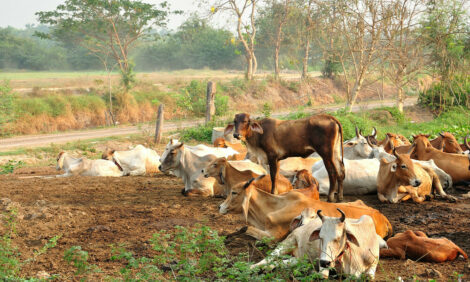



Ethanol Powers A Raise In Dairy Prices
US - There's irony, dairy farmer Lynn George says, in the movement toward ethanol fuel being touted as “the wave of the future,” making travel cheaper and boosting farm revenues.| ETHANOL: The wave of the future? |
While gasoline prices could drop slightly as ethanol appears on the scene, he says there will be a trade-off.
“Food will cost more,” possibly as soon as this winter, George said.
That's because there already is so much demand for corn - one of the major crops used to produce ethanol fuel - that many farmers who used to grow wheat, barley, beans and cotton have switched to corn instead.
George Farms, run by Scott, Arley and Lynn George, is among just three dairy farms in the Cody-Powell area. Lynn George says there used to be many more, but for various reasons the other dairy farmers sold out.
George Farms raise corn on about 600 acres but can't produce enough for all their needs, so they must purchase other livestock feed, which also has risen in price as many farmers switch to crops used to produce ethanol, George said.
The Georges turn the corn they grow into silage that provides about one-third of the annual ration for their Holstein herd.
The brothers milk about 450 cows each day, living a lifestyle that is mostly hard work.
People who think it's bucolic to run a dairy farm are invited to “come out and help us milk on Christmas morning” at 2 a.m., George said.
“It's a tough way to make a living. It's every day,” he says, adding that while the price of milk may be rising, with a gallon now costing more than $4 at some convenience stores and averaging about $3.60 at larger markets, the profit is certainly not landing in the dairymen's pockets.
The Georges sell their milk by “hundredweight,” and the price recently rose to $19 per hundredweight, Lynn says.
“If it hadn't, we'd be losing money left and right,” he added. “People think dairymen are getting rich,” but in fact they are competing for corn with chicken producers
“Chickens are the biggest consumers of corn,” George added.
In the 30 years Lynn has been farming with his brothers, the price of milk per hundredweight “has gone up and down” from $9-$19, he says.
When the nationwide corn harvest is finished this fall and the produce sold, “then folks will really find out” whether there will be a sharp increase in food prices, George says.
Even though dairy farmers purchase a by-product of the ethanol process, a distillate that has been praised as useful for cattle feed, “you can't feed a huge amount of it” because it causes illness “like a huge heartburn” in cattle, George says. Too much of the material can even be fatal.
Grocery store prices could rise because of crops that were not grown because farmers switched to raising corn.
“We've seen a gradual increase since last winter in the demand for corn,” George added.
“We're our own worst enemy,” he said. “We've been spoiled in America. We've always had abundant food. Now it's going to cost a bit more.”
In his opinion, ethanol is the problem and “we're just seeing the tip of the problem” right now.
The solution?
“Drink milk,” Lynn George says.
It works for him.
Further Reading
|
|
- Go to our previous news item on this story by clicking here. |
TheCattleSite News Desk


